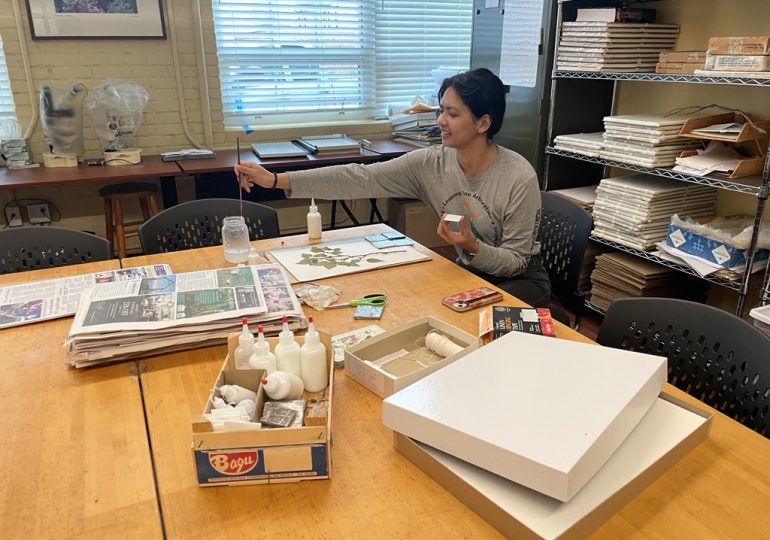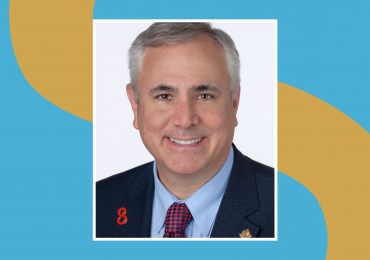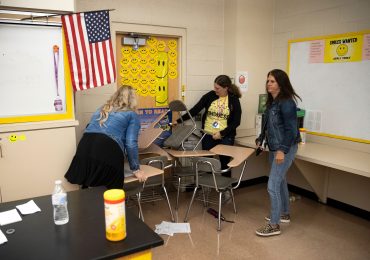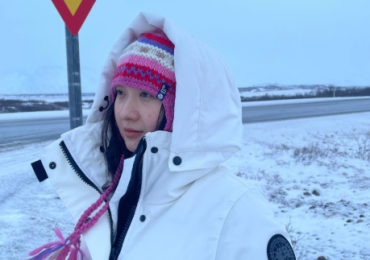In this week’s blog post, we learn what’s the buzz about pollinators and their affinity to heat. Through her recently published paper: “Isolating the effects of floral temperature on visitation and behavior of wild bee and fly pollinators”, Jennifer explores how traits and behaviours of insect pollinators can shift according to varying flower temperatures under different environmental conditions. This work is crucial to help us better understand our best friends of the environment and the associated risks they face. Alongside her love for plants and fascination with flower traits and pollination, Jennifer reminds us to invest in our local communities – they can often lead us towards our calling!
About the paper
As sessile organisms, plants often experience highly variable environmental conditions and rely on morphological traits or behavioural thermoregulation to protect their pollen and ovules from extreme high or low temperatures. These traits and behaviors can include variation in reflection and absorption of light by petal tissue or movement of petals to trap or release heat. Similarly, many small-bodied pollinators will alter their foraging behaviour based on thermal conditions. Past research has shown that pollinators will perform cooling flights in hot environmental conditions and rest in enclosed flowers in cold environmental conditions to warm their bodies. This study investigated how near-infrared reflectance and petal angle leads to varying flower temperature under varying environmental conditions, and how pollinator behaviour changes in relation to flower temperature.
We found that pollinators altered their behaviour based on both flower and air temperature. Fly pollinators visited cooler flowers in hot environmental conditions and warmer flowers in cold environmental conditions. Flies also spent more time in cooler flowers in hot conditions but warmer flowers in cool conditions. Contrastingly, bee pollinators did not change their visitation patterns in response to flower temperature. Instead, visitation by bees was dependent on air temperature, with more bees visiting flowers in hot temperatures relative to cold temperatures. Bees did however change their basking behaviour (i.e., resting on the flower without foraging) in response to flower temperature! Bees were more likely to engage in basking behaviour in warm flowers during cold environmental conditions.
About the research
Our data was collected through observations of experimental arrays of model flowers at three lower elevation and three higher elevation populations of the flowering plant, Argentina anserina, in Southwestern Colorado. During our field season, my advisor, my lab mates and I would observe a floral array and record each pollinator, how long they visited, and which flowers they visited. The model flowers were equipped with thermocouple temperature loggers so we could relate visitation and behavior directly with floral temperature. From our observational data we were able to dissect the relationships between the flower temperature, air temperature, the pollinators, and their respective behaviours.
Before the field season started, I went through several iterations of the model flower design. My goal was to maximize temperature differences between control and treated flowers with minimal effects to pollinator-perceived traits. This took several trials where I used different materials that were reported to reflect infrared light and have a ‘cooling’ effect. I additionally augmented traits such as petal angle to achieve differences in floral temperature. Our results show that pollinator choice based on flower temperature is highly dependent on the environmental air temperatures during foraging. We saw that flies showed a stronger preference for floral temperature than bees. This result was surprising to us because most studies in a laboratory setting show that bees exhibit strong temperature preferences. Additionally, our study shows that floral temperature is shaped by complex interactions between floral traits and environmental conditions like the degree of solar radiation. Reason being the model flowers that reflected more infrared were only cooler than the control flowers in alpine environments where solar radiation is stronger.
Next steps will be diving deeper into these complex interactions between floral traits and environmental conditions. I am particularly interested in how flowers with variable traits warm and cool in similar environmental conditions, and how thermal optima of flowers varies at the community level.
About the author
My love for plants developed after taking an introductory botany course my first year at Cal Poly San Luis Obispo, and getting involved in undergraduate research, leading to me volunteering at my local herbarium. During my undergrad, I was surrounded by enthusiastic mentors, and I felt inspired to find a career where I could share my love for plants with others. This led to me pursuing my master’s at Clemson University, where I conducted this research on floral thermoregulation and pollinator behavior. During my time in grad school, I was able to build my skills in science communication through TAing courses, volunteering at outreach events, and taking courses in the engineering and science education department. I now work at the Michigan State University Herbarium, where I work with classes and conduct public outreach. In the past few months, I’ve worked with audiences of all ages learning about “the science of seeds”, “how herbaria inform research”, and “the world of leaf traits and adaptations”.
As I settle into this role at the herbarium, I am continuing to explore flower traits and the relationships between plants, pollinators, and environment. In writing this paper, I was able to learn about the nectar microbiome, and how these microbes are affected by variation in flower temperature. I am immensely fascinated by how these microbes can affect nectar viscosity, and that this interaction is dependent on flower temperature, which in turns varies depending on floral traits and air temperature. All of this then in turn has the potential to affect patterns of pollinator visitation.
I am in this position today because I was surrounded by people who believed in me. My advice to early career scientists is to invest in your local scientific community, including peers, faculty, and beyond.
Like the blog post? Read the research article here.
Leave a comment







